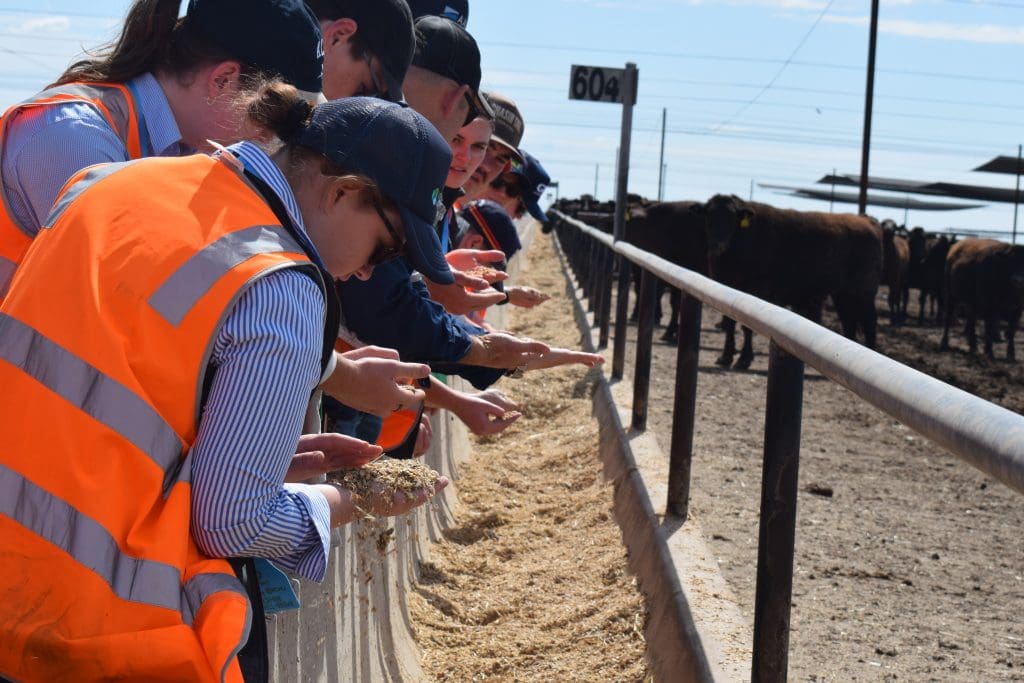
Intercollegiate Meat Judging Association students examine the ration at Mort & Co’s Grassdale feedlot last year. Photo: Eric Barker
THE feedlot sector looks like it has maintained its position as Australia’s biggest user of feedgrain, with grain comprising roughly 50-70 percent of rations.
According to the Stock Feed Manufacturers Council of Australia latest figures, the feedlot sector consumed 6.5 million tonnes (Mt) of feed in 2018, including 3.9Mt of grain.
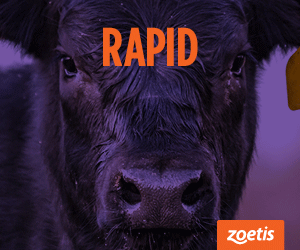 Since Beef Central released its last Top 25 Lot Feeders survey in 2015, what goes into the benchmark ration has changed.
Since Beef Central released its last Top 25 Lot Feeders survey in 2015, what goes into the benchmark ration has changed.
To the delight of nutritionists, sorghum has priced itself out of feedlot rations, and big cotton crops in recent years have made white fuzzy cottonseed readily available over the cooler months and into summer.
Feedlots are also comfortably switching between, or blending barley and low-protein wheat, as price and availability dictate, and a range of co-products including almond hulls has allowed nutritionists to formulate more effective rations.
Sodden conditions last spring means good-quality hay from eastern states is hard to find, and South Australia is therefore supplying much of the roughage component.
Buoyant export demand for white grain and cottonseed means major inputs are not cheap, and the challenge for feedlots is blending an effective ration from the most affordable inputs they can land.
| 2014-15 | 2021-22 | Change | Grain use 2017-18 tns |
|
| Eggs produced | 5.1 billion | 6.6 billion | +29pc | 998,000 |
| June qtr cattle on feed | 956,927 | 1,195,466 | +25pc | 3,913,000 |
| Tns chicken meat produced | 1,116,000 | 1,366,900 | +20pc | 3,261,000 |
| Tns pig meat produced | 369,473 | 438,700 | +19pc | 1,632,000 |
| Dairy cows | 1,689,000 | 1,340,000 | -21pc | 2,628,000 |
Table 1: Production figures for 2014-15 and 2021-22 from: Australian Eggs; Australian Lot Feeders’ Association; Australian Chicken Meat Federation; Australian Bureau of Statistics, and Dairy Australia, with 2017-18 grain use figures from the most recent SFMCA report released in 2018.
Farewell to sorghum
Integrated Animal Production nutritionist Rob Lawrence is pleased to report that sorghum has disappeared from feedlot rations.
“Even the guys who can steam-flake it are staying away from it, and it’s priced itself out of the market,” Mr Lawrence said.
“We all convinced ourselves we could deal with it, but it’s highly variable, and it uses a load of steam to flake it; I can’t think of anything good to say about it.”
Grown in Queensland and northern NSW, the red grain typically traded for $40/t or more below white grains; based on unstoppable Chinese demand, it is now dearer than feed wheat and barley.
Barley in demand
Barley remains the nutritionists’ favourite in many mixes, and domestic demand from feedlots in particular has quashed its normal discount of up to $30/t from even SFW-type wheat.
“A great way of reducing the fibre requirement is to feed barley.
“Barley has a multi-layered seed coat and that makes it more effective (than wheat) at providing fibre.”
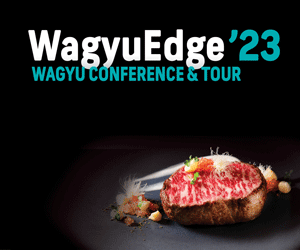 When the top-grade F1 barley is blended with F2, it is making a solid base for many rations, ahead of downgraded SFW wheat.
When the top-grade F1 barley is blended with F2, it is making a solid base for many rations, ahead of downgraded SFW wheat.
“People are feeding a combination of F1 and F2 and, despite F2 being quite light…screenings have been bugger all — lower than SFW — at around 3-5pc, when normally F2 screenings are up to 25pc.”
Mr Lawrence said better-quality SFW has mostly been sold to export or domestic customers, and downgraded barley was preferred over wheat with low test weights from the rain-affected harvest.
“SFW was very good quality to start with; it wasn’t uncommon for it to be 80kg, and now…it’s at specs of 70kg test weight and 10pc screenings.
“Compare it with a little bit of lighter barley with the lower screenings, and people go: ‘I’ll stick with barley’.”
Another source said nutritionists were more confident about formulating rations that used wheat only or a wheat-barley blend without causing animals to overheat, once a possibility, especially during summer, because of wheat’s typically higher energy.
“Ten plus years ago, people were hesitant about wheat as being a ‘hotter’ grain,” the source said.
“People have learnt to feed it, and found that milling and tempering it reduces risk.”
“People are a lot more confident feeding wheat now than they were.”
Mr Lawrence said “washed out” protein in cereals from the harvest just gone has increased the nutritional needs from other inputs in the northern region.
“It’s not uncommon to have 8.5pc for barley and 10.5-11pc for wheat.”
“We’re needing cottonseed to compensate for that.”
“Cottonseed used to be cheap as chips; now it’s a valuable commodity.”
“Cottonseed, even when the price is up to $480, is still cheap compared with grain.”
Juggle for roughage
Roughage forms around 20pc of finisher rations, and is a little higher in starter rations.
Mr Lawrence said it has become a challenge to source at affordable prices.
“One of the things that’s happened with all the wet weather is that roughage has gotten very expensive.”
In contrast to the dry end to the 2017-2019 growing seasons, when failing crops were cut for hay, the soft finishes to the 2020-2022 seasons in eastern states have reduced the amount of roughage available in spring and summer.
Flooding centred in NSW last year wiped out considerable areas of lucerne hay, and Mr Lawrence said this has compounded reasons for feedlots to look to SA for quality roughage in volume.
“The only good hay is coming out of SA at $450-$500/t, and $300/t for straw.”
Specialist inputs sought
Almond hulls from the south-west NSW and into SA and Victoria are in demand as a source of roughage, and in January-February were trading at around $190-$220/t delivered Downs.
Castlegate James is Australia’s leading supplier of co-products to the feed industry, and also manufactures blends and pellets for feedlots and other sectors.
Castlegate James national feedlot manager Rhett Woolley said feedlots accounted for roughly 70pc of Castlegate James’ volume traded, and the preferred blends feature malting, milling and baking co-products.
“In Queensland, we do a feedyard blend, which is a mix of biscuit meal, dough, and bread, and it’s high in energy and high in starch,” Mr Woolley said.
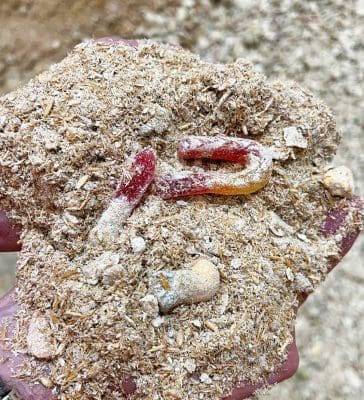
Co-products from the food and beverage sector, including confectionery, are used by many feedlots in their rations. Photo: Castlegate James
Brewers Sweet Grain is a national offering which adds starches and sugars to residues from malted cereals and other starchy products.
“BSG has been one of our feedlot key products…and in the past 10 years, it’s been one of our marquee products.”
“Our feedyard blend has come along in the past few years, mainly to give more people access to it.
“The co-product game can be very up and down; it’s not like a grain where you can get it when and where you want most of the time.”
“By being able to blend three or four products, it allows consistency in greater volumes.”
Mr Woolley said demand from individual feedlots was fairly consistent in volume terms, but the blend sought and its composition can vary throughout the year.
“At certain times of year in the south, our feedyard blend is an energy booster, with lollies in it, like Snakes, jubes and licorice.
“With breads and biscuit meals, energy is really accessible, as well as the starch.
“Once you cook bread, it’s nearly all available straight into the system.
Castlegate James’ feedlot customers are spread across the country, and Mr Woolley said the company’s products generally form around 5-7pc of its clients’ rations.
He said limitations on inputs available mean the company is not out to service every feedlot.
“In the south, we’ve built the feedlot job more than in the north; we aren’t big enough for everybody.”
Call for meal modest
One industry source said cottonseed has been a key inclusion for several years, and pulses like faba beans are yet to become a staple in most rations.
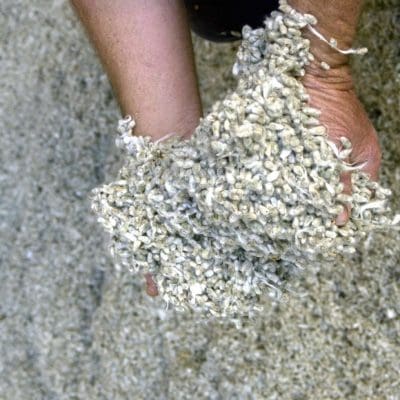
Feedlots are regular buyers of white fuzzy cottonseed from gins in Qld and NSW.
When cottonseed does become tight in the lead-up to new crop, the window feedlots are now in, canola meal from local crushers has been the preferred option over the relatively expensive imported soybean meal.
Canola meal can be made from GM and non-GM seed, and a portion of feedlots seek the latter.
“Some programs are GM free, which excludes cottonseed.
“The only time you’d see soybean meal is when cottonseed goes through the roof, and before you’ve had much of a canola press.
“Early last year there was a bit of soybean meal fed, and that wasn’t a normal thing.”
“White fuzzy cottonseed has high protein, and it’s got oil, so there’s good energy, and seed is a roughage source.
“Out of one product, you’re getting three ingredients.
“It’s also easy to handle; most feedlots are using a front-end loader to get it into their rations.”
The feedlot sector has also adjusted to the disappearance of cottonseed meal, following the closure in recent years of up-country plants, particularly the Cargill facility at Narrabri.
Some feedlots, including Mort & Co’s Grassdale, have a cottonseed dehulling plant on site which gives them more nutrition options with the raw material.
Feature proudly presented by Zoetis Australia and its products, BOVI-SHIELD MH-ONE, RHINOGARD and SYNOVEX
Grain Central: Get our free news straight to your inbox – Click here
